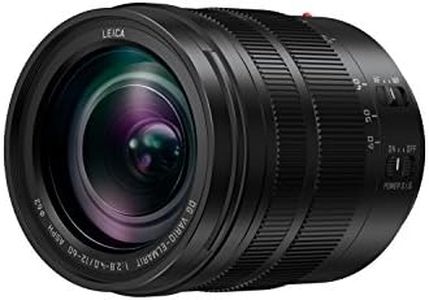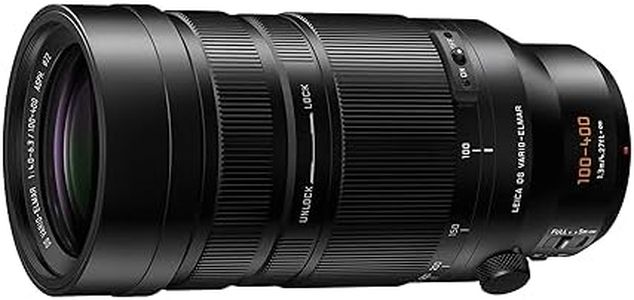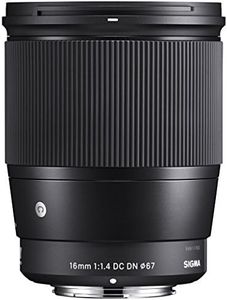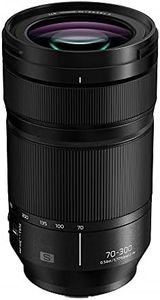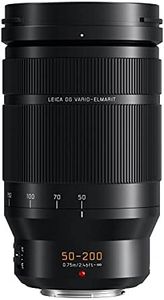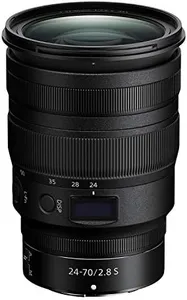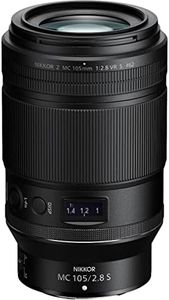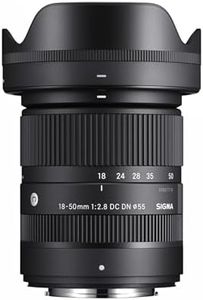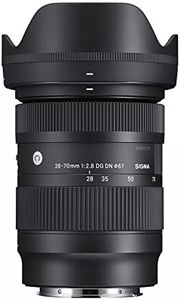We Use CookiesWe use cookies to enhance the security, performance,
functionality and for analytical and promotional activities. By continuing to browse this site you
are agreeing to our privacy policy
10 Best Camera Lenses
From leading brands and best sellers available on the web.Buying Guide for the Best Camera Lenses
Choosing the right camera lens is an important step for any photographer, whether you are just starting out or already have some experience. The right lens can help you achieve the look you want in your photos—whether that's sweeping landscapes, close-up portraits, or detailed shots of small subjects like flowers or insects. It's important to understand the main features of lenses so you can make an informed decision based on your photography interests and goals. Always think about what you’re mostly going to shoot and how the lens will help you capture those images.Focal LengthFocal length, measured in millimeters (mm), tells you how 'zoomed in' a lens will be. It also affects how much of the scene fits into your picture. Shorter focal lengths (like 10-24mm) are called wide-angle and capture more of the scene, making them great for landscapes and architecture. Standard focal lengths (35-70mm) work well for street and everyday photography. Longer focal lengths (85mm and above) are called telephoto and bring distant subjects closer, which is perfect for wildlife or sports. To choose, consider what you photograph most; wide for big scenes, standard for general use, or telephoto for distant subjects.
Maximum ApertureThe aperture is the lens opening that controls how much light enters the camera. It's written as an f-number, like f/1.8 or f/4. A lower number (like f/1.8) means a wider aperture, allowing in more light, which is great for shooting in low light and getting backgrounds that look softly blurred. Higher numbers (like f/4 or f/5.6) let in less light and are often found on budget-friendly or compact lenses. If you want to shoot in dark places or make portraits with blurry backgrounds, look for a lens with a low f-number.
Lens Type (Prime vs. Zoom)Primes are lenses with a fixed focal length, meaning they don't zoom, while zoom lenses let you adjust the focal length to get closer or further from your subject. Prime lenses, like a 50mm, are often sharper and have larger apertures, which can be great for portraits and low-light shots. Zoom lenses are more flexible, allowing you to quickly change how close you are to your subject, which is handy for travel or events. Your choice here depends on whether you prefer flexibility (zoom) or want simpler, often higher-quality images from a prime.
Image StabilizationImage stabilization is a feature that helps reduce the blur from shaky hands, especially when shooting at slower shutter speeds or longer focal lengths. Some lenses have it built-in, which is useful for handheld shooting or in low light. If you often take photos without a tripod or use telephoto lenses, stabilization can help you get sharper images.
Autofocus PerformanceAutofocus tells how quickly and quietly a lens can focus on your subject. Some lenses focus quietly, which is important for shooting video or in quiet environments, while others are faster, helpful for sports or capturing moving subjects. Consider what you usually shoot—if subjects are moving a lot, fast autofocus is essential; for portraits or still life, slower focus may be less of an issue.
Lens Mount CompatibilityNot all lenses work on all cameras. Each camera brand usually has its own lens mount, and you need a lens that matches your camera model. Some brands also have lenses meant for smaller or larger sensors, so double-check that the lens you pick fits and works with your camera body. Always check compatibility before buying.
Build Quality and Weather SealingBuild quality is about how sturdy the lens feels and how well it’s made. Some lenses are made with metal and have weather seals to protect against dust and moisture, making them a good choice if you shoot outdoors or in rough conditions. If you are mostly indoors or in good weather, this might not be as important.
Close Focusing DistanceThis spec tells you how close you can get to your subject and still focus well. If you want to photograph small subjects like flowers, insects, or details (macro photography), check for lenses that can focus very close. For general photography, this distance is less important.


